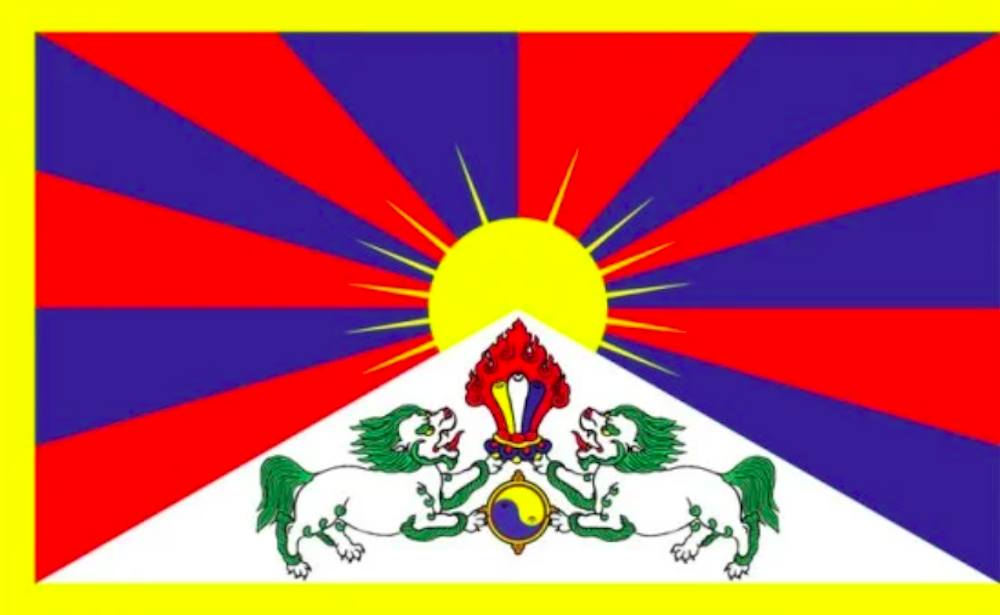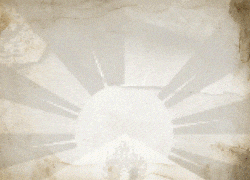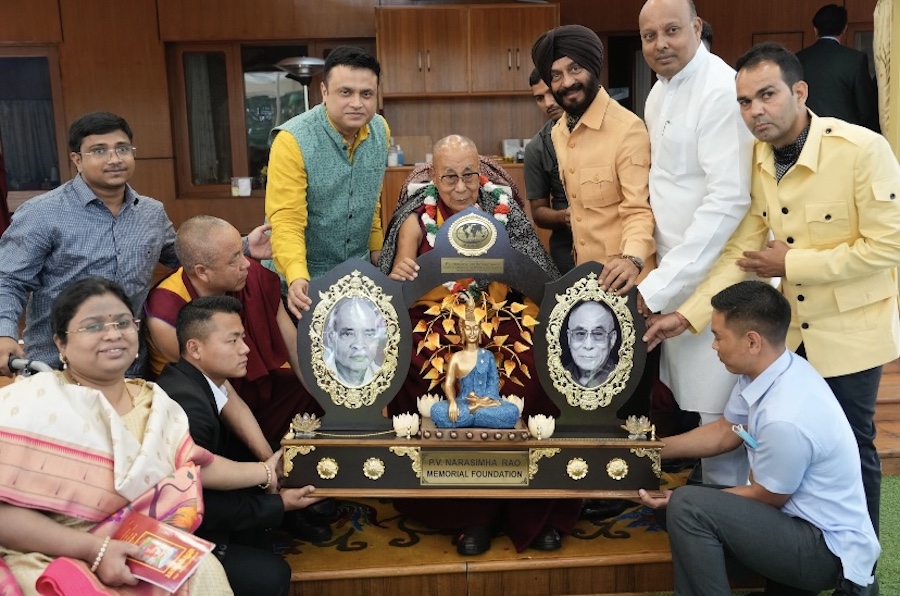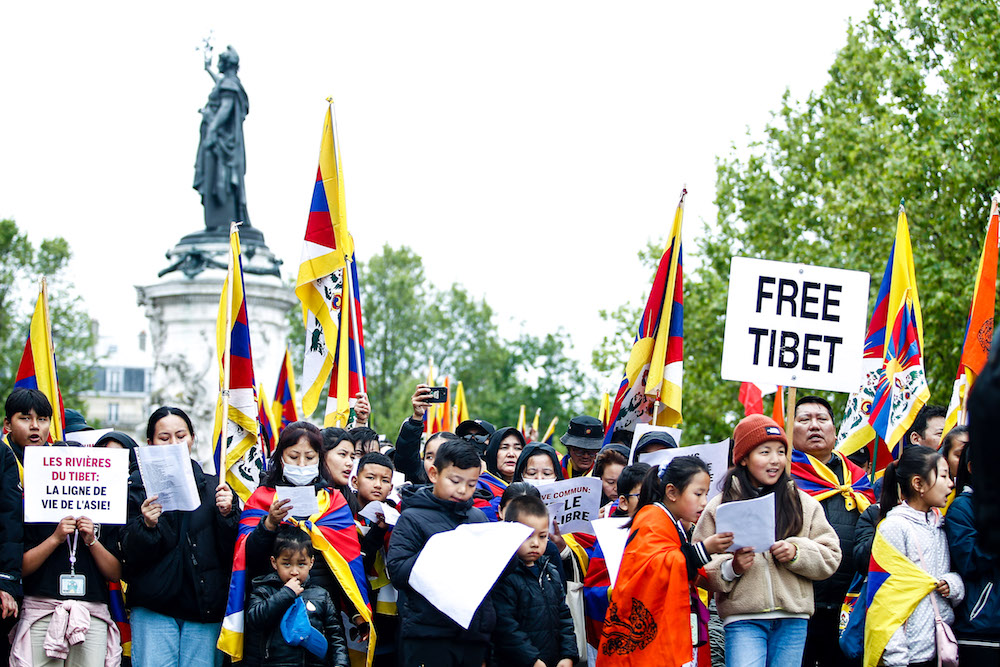By Sharpa Rinpoche
The Tibetan national flag is intimately connected with the authentic history and royal lineages of Tibet which are thousands of years old. In the Tibetan Royal year 820 or in the seventh century, at the time of the Tibetan religious King Songtsen Gampo, large expanse of land was divided into large and small districts. From these large and small districts, a strong army of 2,860,000 men was recruited and stationed along the borders of Tibet, and the subjects thus lived in safety. The bravery and heroism of the Tibetan people at that time in conquering and ruling even the adjacent empire of China is well-known in world history.
At that time it is recorded that the regiment of Yoeru Toe had a military flag with a pair of snow-lions facing each other; that Yoeru Mae had a snow-lion with a bright upper border; and the flag of Yoeru Toe had a white flame against a red background, and so forth. In this way, the regiments of each area had its own individual military iconograph. Continuing with that tradition into the beginning of the twentieth century, various regiments within the Tibetan army have had military flags with either a pair of snow-lions facing each other, or a snow-lion springing upwards and so forth.
In the latter part of this period, during the rule of His Holiness the Great Thirteenth Dalai Lama, the great Statesman enacted many modifications in administrative policies in accordance with international customs. Based on the formats of previous Tibetan military flags, His Holiness improved upon them and designed the present, modern national flag. With an official proclamation, he declared that this would be the uniform standard flag to be adopted by all Tibetan military defense establishments. Since the time of that proclamation, all Tibetan regiments have likewise adopted this flag as their standard.
The color scheme of the Tibetan national flag gives a clear indication of all aspects of Tibet in its symbolism such as the religious, geographic features of the snowy land of Tibet, the customs and traditions of Tibetan society, the political administration of the Tibetan government and so forth.
(Views expressed are his own)
The author is the translator of Trijang Rinpoche’s Autobiography “The Magical Play of Illusions”. He lives in Madison, Wisconsin.










